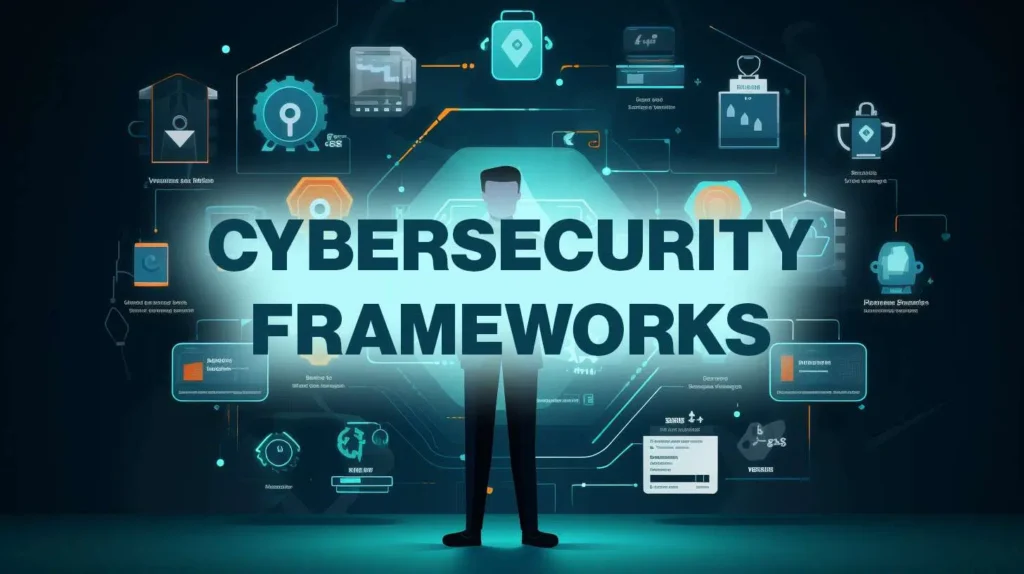
Status: Final Blueprint
Author: Shahab Al Yamin Chawdhury
Organization: Principal Architect & Consultant Group
Research Date: May 4, 2024
Location: Dhaka, Bangladesh
Version: 1.0
1. Executive Summary
Modern enterprises face a paradox: a landscape of abundant cybersecurity frameworks has led to “framework fatigue,” paralyzing strategic decision-making. This document provides a blueprint for selecting, implementing, and harmonizing these frameworks to build true cyber resilience. It moves beyond a simple catalog of standards to offer a data-driven methodology for creating a tailored “framework of frameworks.” The core conclusion is that mature organizations do not choose a single framework but strategically layer them to address governance, risk, and operational controls cohesively, transforming compliance from a cost center into a strategic enabler.
2. The Framework Dilemma
The proliferation of cybersecurity frameworks is a response to the diverse risk profiles and regulatory pressures across different industries and technologies. The primary challenge is not selecting one “best” framework, but integrating multiple frameworks to cover all organizational needs efficiently. A compliance-checklist mindset is a common pitfall, leading to security gaps despite certification. The goal is to build a dynamic risk management program, not just pass an audit.
3. At-a-Glance Framework Comparison

The most effective security programs leverage the distinct strengths of multiple foundational frameworks. The table below summarizes the ideal use cases for the most prominent options.
| Framework | Primary Focus & Approach | Key Audience | Ideal Use Case |
| NIST CSF 2.0 | Risk Management: A flexible, outcome-oriented guide to managing enterprise-wide cyber risk. | C-Suite, Risk & Security Leadership | Establishing a new or maturing an existing risk management program; unifying other frameworks. |
| ISO/IEC 27001 | Management System (ISMS): A process-oriented, certifiable standard for a holistic security system. | Security & Compliance Teams, Partners | Demonstrating security assurance to international customers; building a formal, auditable ISMS. |
| CIS Controls v8 | Cyber Hygiene: A prescriptive, prioritized set of technical controls to stop common attacks. | IT Operations, Security Practitioners | Rapidly improving technical security posture and achieving “basic cyber hygiene” with limited resources. |
| COBIT 2019 | IT Governance: A framework for aligning all information and technology processes with business goals. | Board of Directors, Executive Leadership | Establishing clear governance over all enterprise I&T; bridging the gap between the board and IT. |
4. Sector-Specific Mandates
For many industries, framework adoption is not optional. These mandates form a non-negotiable baseline:
- PCI DSS: For any organization that stores, processes, or transmits cardholder data.
- HIPAA Security Rule: For U.S. healthcare entities and their business associates handling patient data.
- NERC CIP: For operators of North America’s Bulk Electric System to ensure grid reliability.
5. A Strategic Path to Selection
To select the right framework(s), an organization must first analyze its unique context by answering three key questions:
1. Are we subject to mandatory regulations?
- Yes: Your journey starts with the required framework (e.g., PCI DSS, HIPAA). This is your compliance floor.
- No: Proceed to the next question.
2. What is our primary strategic objective?
- Demonstrate Trust to Partners: Lean towards ISO 27001 for its global certification.
- Build an Enterprise Risk Program: Use NIST CSF as the foundational language for risk.
- Rapidly Improve Technical Security: Start with the actionable CIS Controls.
- Align IT with Business Goals: Leverage COBIT for board-level governance.
3. What is our organizational maturity?
- Low Maturity / SMB: Start with CIS Controls (Implementation Group 1) for the highest impact with the least resources.
- Medium Maturity: Use NIST CSF for strategy and the CIS Controls for tactical implementation.
- High Maturity: Architect a “Framework of Frameworks,” using COBIT for governance, NIST CSF for risk management, ISO 27001 for the formal ISMS, and CIS Controls for technical specifications.
6. The Unified Controls Strategy: Implement Once, Comply Many
Managing multiple frameworks in silos is inefficient. A harmonized approach involves selecting a primary framework (like NIST CSF or ISO 27001) and mapping all other regulatory and security requirements to its control set. This creates a single, master set of internal controls. By implementing and auditing against this unified set, organizations can drastically reduce redundant work, lower audit costs, and transform compliance into a strategic, efficient function.
7. Future-Proofing Your Strategy
The governance landscape is constantly evolving. Organizations must prepare for emerging trends:
- Artificial Intelligence: AI introduces new risks (e.g., data poisoning, model theft) that require specialized governance, with frameworks like the NIST AI RMF and COBIT providing guidance.
- Privacy & Security Convergence: Regulations like GDPR and CCPA legally mandate robust security measures, making “Privacy by Design” an essential component of any cybersecurity program.
- Specialization: The need for domain-specific frameworks for Cloud (e.g., CSA CCM) and Operational Technology (e.g., ISA/IEC 62443) will continue to grow.
8. Conclusion
The challenge of “too many frameworks” is not about finding a single perfect solution. It is about architecting a resilient, adaptive, and harmonized security program tailored to the unique DNA of the enterprise. By strategically selecting, layering, and unifying frameworks, organizations can move beyond mere compliance to achieve genuine, measurable, and sustainable cyber resilience.